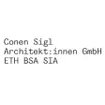
Hochbord Housing
ARCHITECTS
Conen Sigl Architekten
PHOTOGRAPHS
Roman Keller
YEAR
2023
LOCATION
Dübendorf, Switzerland
CATEGORY
Apartments
The Westhof Dübendorf by Conen Sigl Architects stands on the plot of a former plant nursery along the tracks of the Hochbord area in Dübendorf near Zurich.
The neighborhood, a former industrial and commercial zone, is undergoing major restructuring due to its re-zoning into a residential area.
Inspired by the site’s history as a plant nursery, the cooperative housing project with complementary communal uses creates an identity-forming place that fosters a strong sense of community and ecological connectivity.
Its architectural language, with its robust and simple materialization, echoes the functionality of the previous structure, while the proximity to a nature reserve reinforces its connection to the area's ecosphere.
The centerpiece of the development is a communal courtyard.
Framed by three volumes, it blends into the surroundings with a 4-story head building, an angled 3-story wing building and a 9-story main building.
The head building turns slightly, thus opening the courtyard invitingly to the neighborhood.
Soundproof glazing on the 3rd floor of the narrow-wing building provides noise protection.
The flat roof of the wing building houses a semi-public level, intended as a vibrant neighborhood social hub. This roof terrace holds space for events and urban gardening and acts as a recreational and meeting place for residents and visitors alike.
The open pergola structure crowning this part of the building forms an identity-forming and architecturally mediating feature, reconnecting the upper levels with the activities below.
Access to the terrace is provided through internal stairwells and an open public staircase, which provides a direct connection from the courtyard.
The project's high density of diverse outdoor spaces creates a unique potential for various forms of communal appropriation.
The volumetric setting defines different outdoor spaces with specific qualities on the ground floor, whereby great importance was attached to a gradual demarcation from public to communal and further to private zones. Commercial and community use are located in the north and south of the building site.
A Café serves as a neighborhood gathering spot, opening up the development to the south and emphasizing pedestrian and bicycle paths along the railway tracks.
An additional passage goes through the courtyard of the building and creates a square-like situation, to which a multi-purpose room is attached.
In the west of the plot, along the pedestrian path, a strip of community gardens has been established, which can be cultivated by residents, forming a retreat with a semi-public character.
The architectural design references the gardening business and the site‘s commercial past. The project thus sought a robust and simple materialization. The façade uses large-format corrugated Eternit panels.
The pergola construction, which spatially divides the roof terrace of the wing building, takes up associations with the greenhouses. Bath vents and various bird nesting places in vertical structures reminisce chimneys, highlighting the project's commitment to supporting urban biodiversity.
Nesting aids for eight bird species as well as bats and wild bees were incorporated into the façade and on the roof.
Creating a balance between the built environment and nature, Westhof Dübendorf forms a micro-biosphere that integrates human habitation with nature, where landscaping and plants attract insects, providing sustenance for the birds inhabiting the nesting aids, creating a self-sustaining ecosystem that embodies the potential for urban architecture to contribute to the preservation and enhancement of biodiversity.
The balcony layer of the main building facing the inner courtyard forms a filigree plane that lends the house refinement. A non-load-bearing steel structure encircles the balconies and serves to attach the awnings and parapet cladding.
Westhof Dübendorf enables affordable, self-managed, and sustainable living and working environments for a variety of uses and a mixed resident population. The project houses a total of 87 flats and six commercial spaces.
The flat types range from one-room units to cluster flats. Built with locally sourced materials and powered by renewable energy, the complex strikes a balance between affordable housing and sustainable design, earning the SNBS certificate.
It also houses additional communal units such as flex rooms, a multi-purpose hall, and a guest room. In some areas, the size of the flats can be adjusted using switch rooms, allowing two individual units to be combined into one large unit. The flexibility in the building structure allows it to respond to different, changing needs and thus enables a long period of use.




















